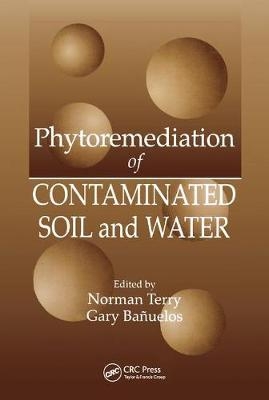
Phytoremediation of Contaminated Soil and Water
CRC Press (Verlag)
978-0-367-39943-6 (ISBN)
The successful implementation of phytoremediation depends on identifying plant material that is well adapted to specific toxic sites. Gentle remediation is then applied in situ, or at the contamination site. No soil excavation or transport is necessary. This severely contains the potential risk of the pollutants entering the food chain. And it's cost effective.
The progress of modern man has created many sites contaminated with heavy metals. The effected land is toxic to plants and animals , which creates considerable public interest in remediation. But the commonly used remedies are ex situ, which poses an expensive dilemma and an even greater threat. Phytoremediation offers the prospect of a cheaper and healthier way to deal with this problem. Read Phytoremediation of Contaminated Soil and Water to learn just how far this burgeoning technology has developed.
Norman Terry , Gary Bañuelos
Field Demonstrations of Phytoremediation of Lead Contaminated Soils
Phytoremediation by Constructed Wetlands
Factors Influencing Field Phytoremediations of Selenium-Laden Soils
Phytoremediation of Selenium-Polluted Soils and Waters by Phytovolitization
Metal Hyperaccumulator Plants: a Review of the Ecology and Physiology of a Biological Resource For Phytoremediation Of Metal-Polluted Soils -
Potential for Phytoextraction of Zinc and Cadmium from Soils Using Hyperaccumulator Plants
Improving Metal Hyperaccumulator Wild Plants to Develop Commercial Phytoextraction Systems: Approach and Progress
Physiology of Zn Hyperaccumulation in Thlaspi caerulescens
Metal-Specific Patterns of Tolerance, Uptake, and Transport of Heavy Metals in Hyperaccumulating and Non-Hyperaccumulating Metallophytes
The Role of Root Exudates in Nickel Hyperaccumulation and Tolerance in Accumulator and Nonaccumulator Species of Thlaspi
Engineered Phytoremediation of Mercury Pollution in Soil and Water Using Bacterial Genes
Metal Tolerance in Plants: The Role of Phytochelatins and Metallothioneins
The Genetics of Metal Tolerance and Accumulation in Higher Plants
Ecological Genetics and the Evolution of Trace Element Hyperaccumulation in Plants
The Role of Bacteria in the Phytoremediation of Heavy Metals
Microphyte-Mediated Biogeochemistry and Its Role in In Situ Selenium Bioremediation
In Situ Gentle Remediation Measures For Heavy Metal Polluted Soils
In Situ Metal Immobilization and Phytostabilization of Contaminated Soils
Phytoextraction or In-Place Inactivation (Phytostabilization): Technical, Economic, and Regulatory Considerations of the Soil-Lead Issue
NTI/Sales Copy
| Erscheinungsdatum | 18.09.2019 |
|---|---|
| Verlagsort | London |
| Sprache | englisch |
| Maße | 156 x 234 mm |
| Gewicht | 694 g |
| Themenwelt | Naturwissenschaften ► Geowissenschaften ► Hydrologie / Ozeanografie |
| Technik ► Umwelttechnik / Biotechnologie | |
| ISBN-10 | 0-367-39943-1 / 0367399431 |
| ISBN-13 | 978-0-367-39943-6 / 9780367399436 |
| Zustand | Neuware |
| Haben Sie eine Frage zum Produkt? |
aus dem Bereich


